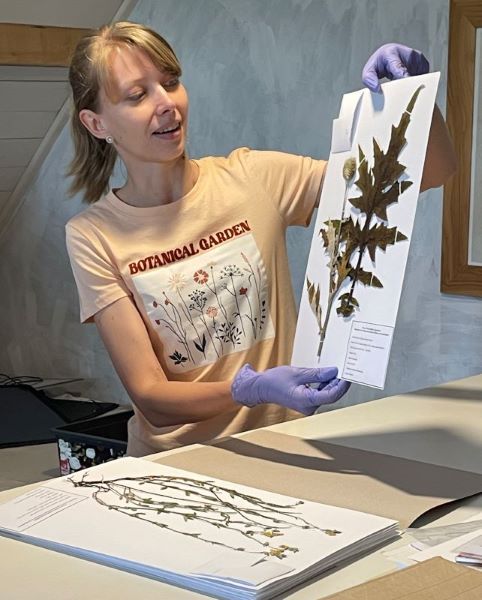For nine consecutive years before moving to Nova Scotia, I taught workshops in one of the world’s recognized wildflower sanctuaries, the Waterton Lakes region in Southern Alberta. In late Spring and early summer, the grassland areas are home to over 400 plant species. It’s the richest wildflower region in Canada and after tough Canadian winters its colourful reawakening is a spectacle worth seeing.
Fast-forward a number of years and I was delighted to have the opportunity to teach in another unspoiled grassland area, this time in Transylvania in Romania.
The Transylvania School of Botanic Art & Illustration is in the hamlet of Copsa Mare. We were hosted by the owners, James and Rachel de Candole, who have lived there for over ten years and are driven by a love of the area and a determination to document the plants of this pristine region.
For centuries the farmed grassland above the village in the Greater Târnava Valley in central Romania has provided grazing for cows, sheep, goats, horses and water buffalo. English botanist John Akeroyd has written that “it provides an excellent habitat for a remarkable number of flowering plants. It is a generic treasure trove of fodder crops.”
James says that they are conscious of the fact that the grassland is unlikely to survive in its present state as the local economy moves away from subsistence peasant farming—slow, mixed, largely un-mechanized, and without resort to pesticides and synthetic fertilizers—to what they dare to hope could become a more economically-viable version of what is still a truly sustainable use of land.
He acknowledges that they are undoubtedly on the cusp of change, and it is for this reason that they embarked upon a four-year project in 2023 to record all the flowering plants in the grassland. The project is being led by the school’s resident botanist, Mihaela Sava, who expects to record some 300 species all concentrated in an area of around 50 hectares. James explains that their goal is to provide scientific evidence of this diversity in the period 2023-2026. His intention Is to allow future generations of botanists to determine whether the ‘genetic treasure-trove’ to which Akeroyd refers, has been depleted, or perhaps even enriched.
Access to a botanist like Mihaela dedicated to documenting the region, is in part what makes the experience for visiting botanical artists and instructors so unique. It’s no wonder that workshops by internationally-recognized instructors are booked two years in advance. This is not just a destination workshop, it is an opportunity to experience a plant haven with the laudable purpose of preservation for posterity. It’s definitely a worthwhile experience for serious botanical artists.
You can find out more about The Transylvania School of Botanic Art & Illustration and their work on their website at www.podart.space.

